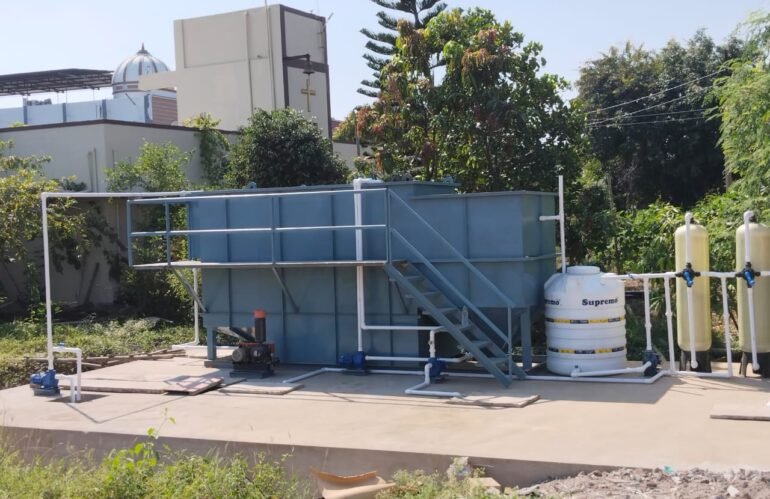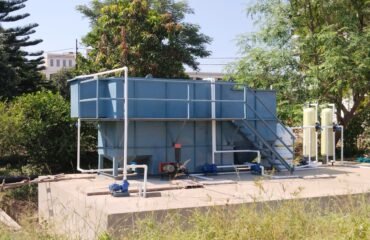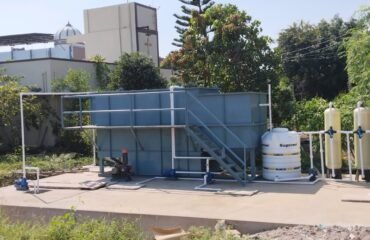In the thriving city of Trichy, there is a hidden gem that plays a pivotal role in preserving the environment and ensuring public well-being. This gem is none other than the Effluent Treatment Plant (ETP) and the Sewage Treatment Plant (STP). In this article, we will delve into the world of ETP and STP waste water treatment plants, understanding their functions and the significance they hold in the context of Trichy.
Introduction to Effluent Treatment Plant and Sewage Treatment Plant
Imagine a city filled with life, industries, and households like Trichy. This vibrant atmosphere showcases human progress, but it also generates a significant amount of waste water. This is where the Effluent Treatment Plant (ETP) and Sewage Treatment Plant (STP) come into play.
Effluent Treatment Plants (ETPs) are designed to purify industrial waste water, while Sewage Treatment Plants (STPs) handle domestic sewage. These facilities employ a combination of physical, chemical, and biological processes to eliminate impurities from the water.
For instance, ETPs use methods like coagulation, sedimentation, and biological treatments to remove pollutants and toxins from industrial waste water. On the other hand, STPs treat domestic sewage through processes like screening, aeration, and sludge treatment. The treated water from these plants can be safely released into the environment, ensuring cleaner water sources and a healthier ecosystem.
The Significance of ETP in Trichy
Trichy’s industrial growth has made ETPs a critical component of the region. Industries spanning various sectors, from textiles to food processing, release substantial volumes of waste water. Without ETPs, this discharge could contaminate water bodies, harming aquatic life and posing health risks to the public.
ETPs in Trichy ensure that industrial effluents meet stringent quality standards before discharge. They also play a pivotal role in maintaining the aesthetics and cleanliness of the city, which is essential for tourism and overall quality of life.
Understanding Sewage Treatment Plants in Trichy
Sewage treatment might not be the most glamorous subject, but it is a fundamental requirement for any urban area, including Trichy. Sewage Treatment Plants in Trichy are designed to manage waste water from households, commercial spaces, and institutions.
STPs function by separating solids from liquids, breaking down organic matter, and disinfecting the water before it’s released. Without STPs, untreated sewage could pose severe health risks and lead to environmental issues.
The Necessity of STPs in Trichy
The importance of STPs in Trichy becomes evident as the city experiences rapid urbanization and population growth. A continually expanding city must efficiently manage its waste to prevent contamination and public health crises. STPs not only safeguard public health but also protect the environment.
Comparing ETP and STP
Both ETPs and STPs serve distinct purposes but share a common objective—environmental protection. While ETPs focus on industrial waste, STPs handle domestic sewage. The key difference lies in the sources of waste water they manage.
ETPs act as guardians of industrial hygiene, ensuring that factories do not harm the environment. On the other hand, STPs silently ensure that sewage from homes does not become a health hazard.
Sustainable Practices in Waste Water Treatment
The significance of ETP and STP in Trichy extends beyond waste water purification. These treatment plants are also advocates of sustainability. They continuously evolve to incorporate eco-friendly practices and reduce their carbon footprint.
Some ETPs and STPs in Trichy are adopting green technologies such as solar power, rainwater harvesting, and energy-efficient processes. These not only lower operational costs but also set an example for other regions to follow.
ETP and STP’s Role in Environmental Conservation
Preserving Trichy’s natural beauty and environment depends on recognizing the crucial role of ETPs and STPs. These plants effectively prevent contamination of rivers, lakes, and coastal areas by treating waste water. In turn, this safeguards the habitat of aquatic species and sustains the scenic landscapes of Trichy.
The Economic Benefits of ETP and STP
One might wonder about the costs associated with maintaining and operating these plants. However, ETPs and STPs in Trichy offer substantial economic benefits. Industries, by complying with environmental regulations through efficient waste water treatment, not only fulfill legal requirements but also enhance their reputation and operational efficiency. This contributes to economic growth in the region.
STPs, apart from safeguarding public health, also create job opportunities and support the local economy. Over time, investing in waste water treatment plants proves to be financially rewarding.
Best Practices for Maintaining ETP and STP
Like any system, ETPs and STPs require regular maintenance to function effectively. Regular inspections, timely repairs, and adherence to safety protocols are essential. These plants should also keep abreast of the latest advancements in waste water treatment to ensure efficiency and compliance with environmental regulations.
The Future of Waste Water Treatment in Trichy
As Trichy continues to grow, the demand for effective waste water treatment will only increase. The future holds the promise of more advanced and eco-friendly technologies in ETPs and STPs. It’s a collective responsibility to stay informed, support sustainable practices, and ensure that this vibrant city remains clean and thriving.
Conclusion
In conclusion, ETPs and STPs are the unsung heroes of Trichy, working diligently to protect the environment and public health. These waste water treatment plants, although often overlooked, play a critical role in maintaining the charm and cleanliness of this thriving city. Let’s acknowledge and appreciate their significance and commit to supporting their continuous improvement.





